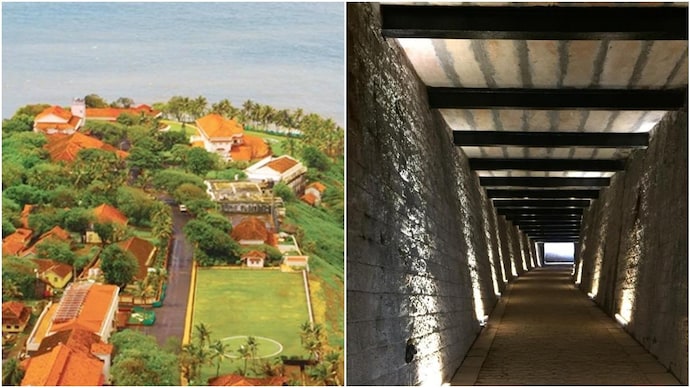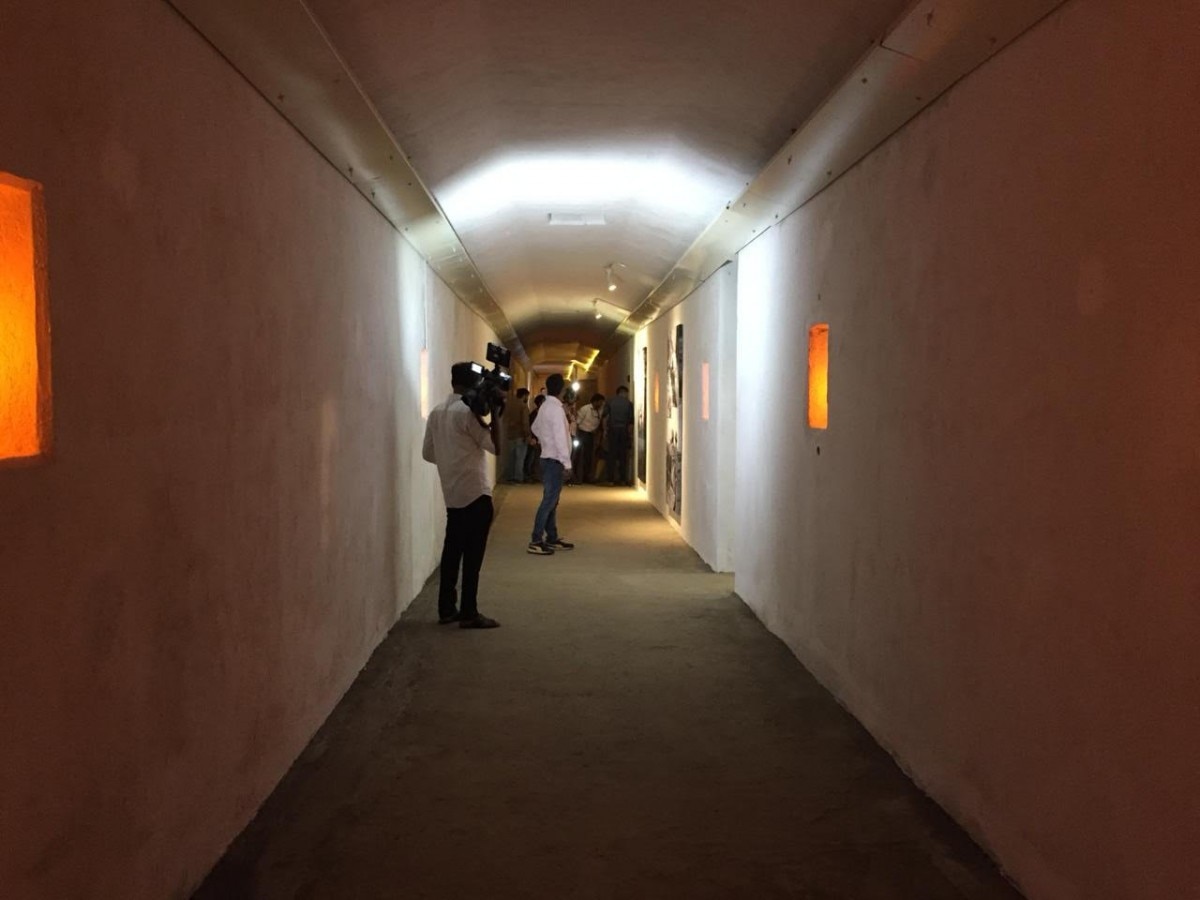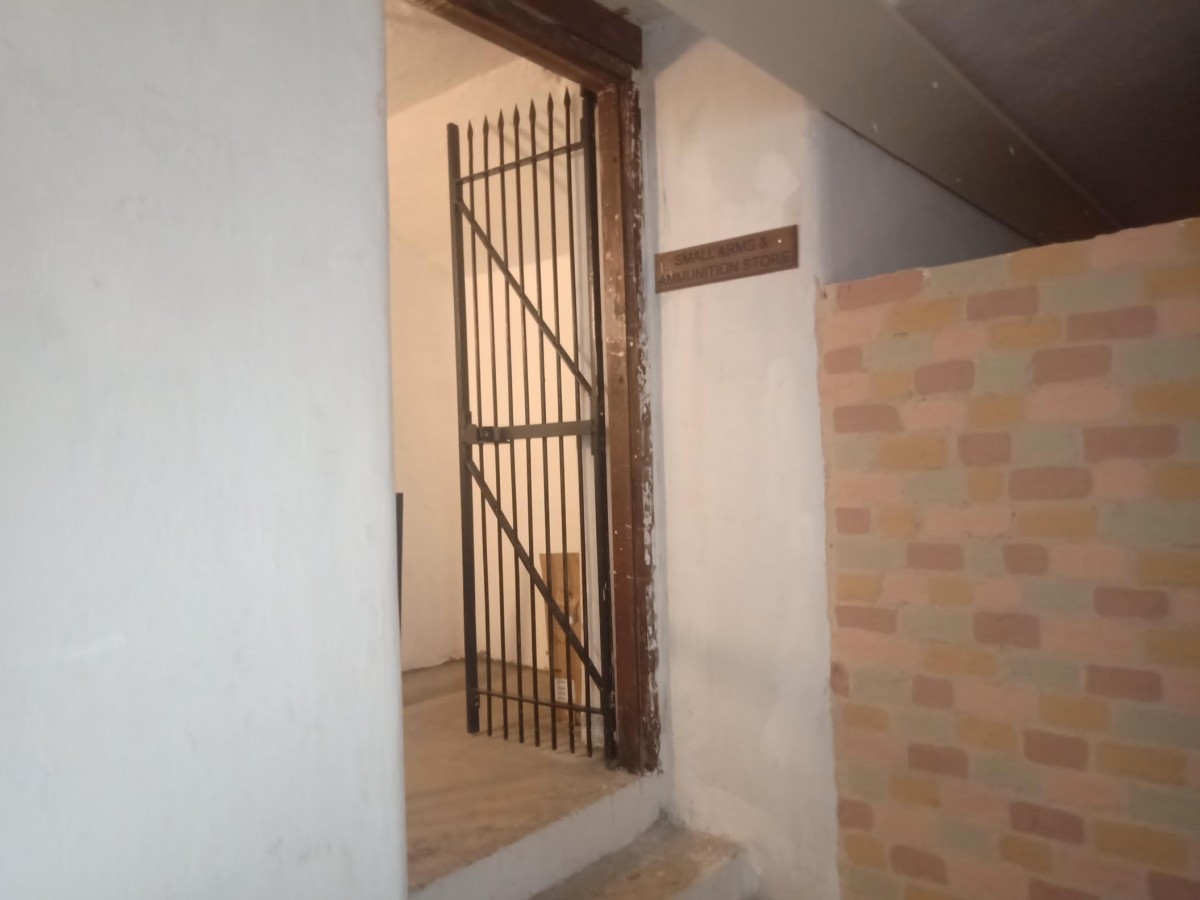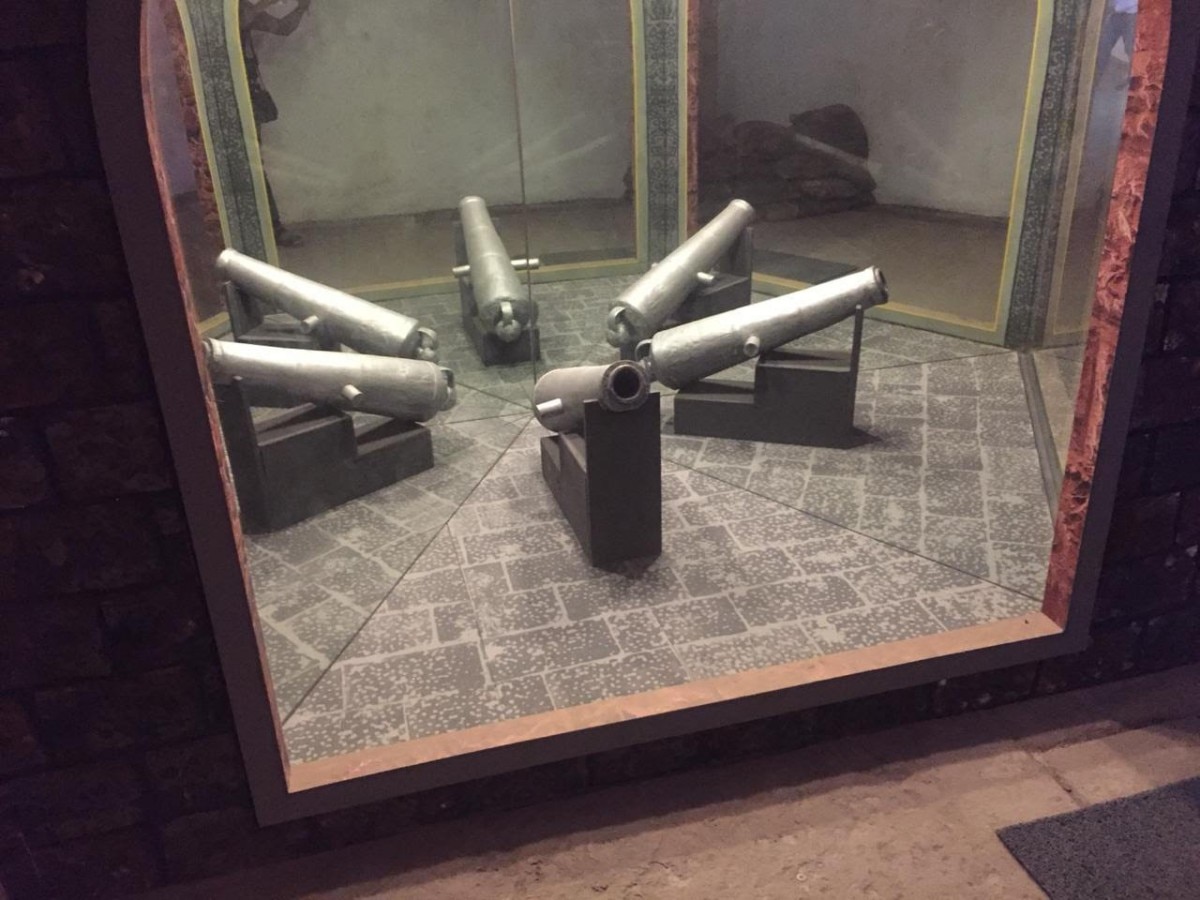Mumbai: British-era bunker built to prevent World War I attack discovered inside Raj Bhawan
The Maharashtra Governor's residence houses within it a British-era bunker. The bunker has now been converted into a museum.

In Short
- The Governor's house was built in Maharashtra by British in 1802
- Underground bunker was discovered in 2016, now made into museum
- Theory suggests British made bunker to prepare for WWI attack on Mumbai
The Maharashtra Raj Bhavan i.e. the Governor's house, which is situated in Mumbai's Walkeshwar area is spread across an expanse of 50 acres. The palatial residence is situated on a hill near the sea. A sight of beauty, it houses around 250 staff members who work and stay there. Some of them are very old.
Jal Bhushan, as it is called, has a history of nearly 200 years, and the present building has undergone several modifications and renovations.
It became the official residence of British governors in 1885 when the 'Government House' was shifted to Malabar Point from Parel.
Many believed that the Governor's residence hides within its fold a huge tunnel, situated near the Devi temple and the Sunset Point. In 2016, a huge wall within the Raj Bhavan, as high as 20ft was brought down and people were shocked to find what lay behind.
Hiding within the depths of the Maharashtra Raj Bhavan was a British-era bunker!
The Governor's house was built by the British in the year 1802. Just below the bungalow is the bunker built before World War I. Above the bunker, the British placed huge cannons.

The underground bunker is spread over 15 thousand square feet and has 13 rooms. After it was found in 2016, many restoration projects were carried out and now the whole bunker has been converted into a museum.
From October, people will be able to visit the bunker. Tickets for the museum will be available through online booking.
High-tech bunker
The bunker was equipped with all architectural techniques available nearly 100 years ago. It is strategically located as it comes with a view of the Arabian Sea from all three directions.

As the bunker stored a huge stockpile of ammunition, it had a space built-in for water pipes to reach inside the whole bunker so that in case of a fire, water could be released and the fire could be controlled.
The bunker was also properly ventilated -- a ten-foot huge ventilation duct was made so that sunlight and air could pass through. It has several rooms which were used for storage purposes.
According to government officials, the bunker was made below the governor's house before the World War I. The officials said that Britishers feared that during the World War I, they may get attacked via the Arabian Sea. Mumbai was one the most important states for the British Empire in terms of business and therefore to protect it during World War I a bunker was made under the governor's house. The bunker was created in the 19th century to fire cannons at approaching enemy ships. This is one theory.

However, investigations are being conducted to ascertain the real reason behind the construction of the bunker as well as when was it constructed.
Bunker becomes museum
Now the bunker has been converted into a with centralised airconditioning. President Ram Nath Kovind on Sunday inaugurated the underground 'Bunker Museum'. It will be opened for the public from the first week of October.

The 15,000 square feet underground bunker museum has virtual reality booths in which visitors can "time travel" to the 19th century, a state government official said.
Another section depicts the history of Raj Bhavan.
(Photos by Mangesh Ambre)
